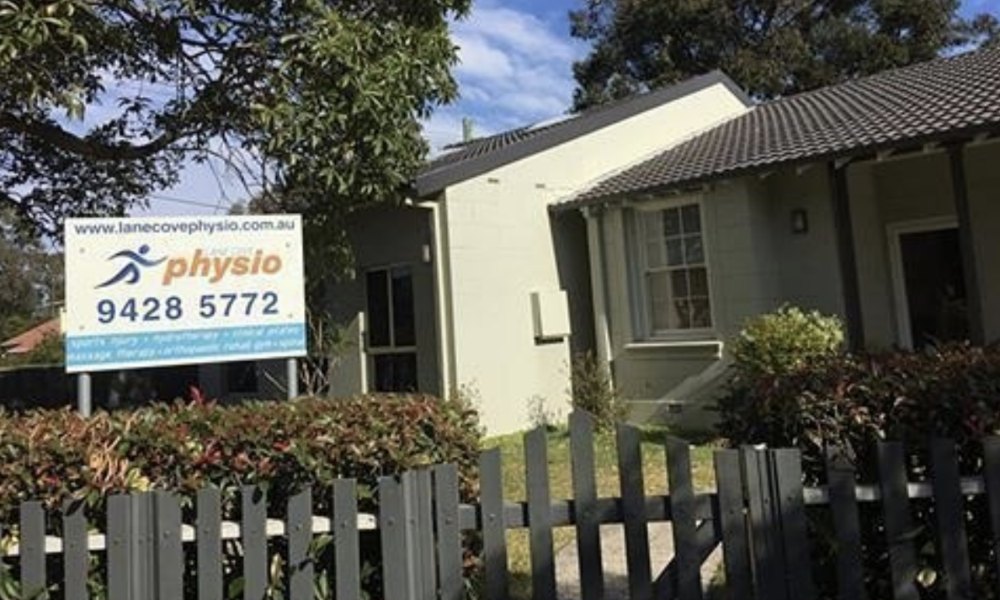Jack Perisa from Lane Cove Physio tells us that with winter contact sports now in full swing, it’s the time of year that he am more likely to see children and adolescents in Lane Cove Physio recovering from a concussion.
The management of concussions in sport, particularly in younger people is a critical part of ensuring sports are played safely.
Thankfully our soft brains are protected by a hard skull casing, but when the head or body encounters a hard impact, the brain can bounce up against the hard skull wall, and injure it.
More information from Jack….
What is a concussion?
Put simply, a concussion is a mild brain injury that can happen after a person has suffered an injury to the head from a collision, falling, or being hit in the head with an object.
The Concussion in Sport Group consensus statement provides an in-depth definition used in concussion cases[1]:
- Concussion may be caused by a direct blow to the head, face, neck, or elsewhere on the body with an ‘impulsive’ force transmitted to the head.
- Concussion typically results in the rapid onset of short-lived impairment of neurologic function that resolves spontaneously. However, in some cases, signs and symptoms may evolve over a number of minutes to hours.
- Concussion may result in neuropathological changes, but the acute clinical signs and symptoms largely reflect a functional disturbance rather than a structural injury and, as such, no abnormality is seen on standard structural neuroimaging studies.
- Concussion results in a range of clinical signs and symptoms that may or may not involve loss of consciousness. Resolution of the clinical and cognitive features typically follows a sequential course. However, in some cases, symptoms may be prolonged.
- The clinical signs and symptoms cannot be explained by drug, alcohol, or medication use, other injuries (such as cervical injuries, peripheral vestibular dysfunction, etc) or other comorbidities (eg, psychological factors or coexisting medical conditions).
How do I know if my child has a concussion?
Children and adolescents who sustain a concussion may have a variety of symptoms. Any potential sign of concussion occurring soon after a head trauma during a sports event should lead to immediate removal of the child or adolescent from activity and further assessment.
The most common symptoms of concussion include:
- Headache
- Dizziness
- Confusion and disorientation
- Difficulties with memory
- Blank stare or “stunned” appearance
- Inattentiveness
- Slow or incoherent speech
- Gait abnormalities and imbalance (stumbling, falling)
- Vomiting
For concussion in adults, an incorrect response to any question on the tests such as the Westmead posttraumatic amnesia scale is considered a positive for cognitive impairment after a head injury:
- What is your name?
- What is the name of this place?
- Why are you here?
- What month are we in?
- What year are we in?
- What town/suburb are you in?
- How old are you?
- What is your date of birth?
- What time of day is it? (morning, afternoon, evening)
Recovering from a concussion
During recovery, children and adolescents suffering from concussions may be particularly vulnerable to worsening symptoms, additional concussions, or potential catastrophic outcomes, such as second impact syndrome if repeated injury occurs.
In addition to removal from organised athletic activities, children and adolescents recovering from concussions should also avoid any recreational activities that may result in a second head injury. Activities such as cycling, skateboarding, ice skating, or skiing should be avoided until they are cleared for competition.
What is the treatment for a concussion?
A concussion does not usually need treatment, with most getting better on their own over time. Some people’s symptoms go away within minutes to hours while others have symptoms for weeks to months.
Physical rest — For children and adolescents with concussions, we recommend a period of physical rest lasting 24 to 48 hours followed by a gradual and progressive return to noncontact, supervised, activity to avoid symptom exacerbation until full recovery, rather than strict physical rest.
Cognitive rest – For children and adolescents with a concussion whose symptoms are made worse by activities such as reading, video games, or screen time, we suggest reasonable rest consisting of light cognitive activities such as watching television, family interaction, and limited amounts of work that does not exacerbate symptoms.
For more information on concussions, how to treat them and how to return safely back to sport and work, give us a call to book an appointment.
[1] McCrory P, Meeuwisse W, Dvorak J, et al. Consensus statement on concussion in sport-the 5(th) international conference on concussion in sport held in Berlin, October 2016. Br J Sports Med 2017.
237 Longueville Road, Lane Cove NSW 2066
Phone: 9428 5772
Email: [email protected]
Website: www.lanecovephysio.com.au
Facebook: www.facebook.com/lanecovephysio
Do you have a local issue you would like help with? ITC is here to help just email us at [email protected]
- Sign up for the weekly In the Cove Newsletter
- Like us on Facebook
- Follow us on Instagram @inthecove
- Tweet us on Twitter @InTheCoveITC
- Pin us on Pinterest inthecoveITC
- Tell your friends about ITC (they will thank you!!)
This article is not intended to be a substitute for professional advice, diagnosis, or treatment. Always seek the advice of your qualified health provider with any questions you may have regarding a medical/physical condition.














